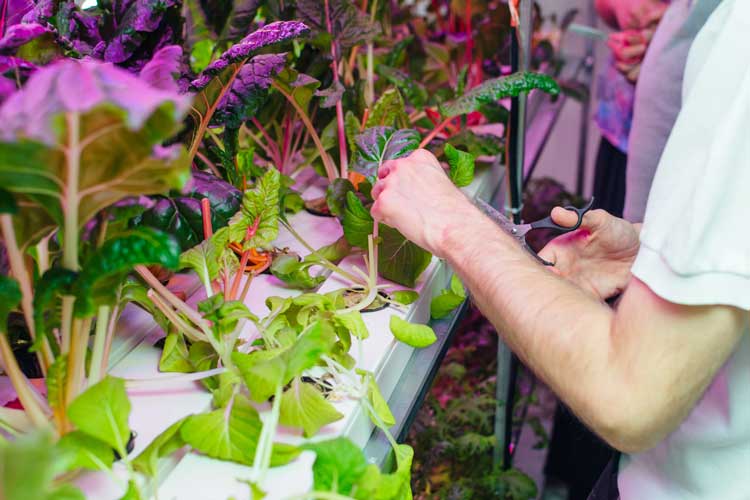Curiosity is a key attribute for investment professionals at T. Rowe Price. So when Alison, a Hong Kong native and current resident, noticed an uptick in local demand for organic vegetables it piqued her interest. Interviews with retailers led her to the produce suppliers and a technology application she hadn’t been expecting: vertical farming. The local organic farming community was busily transforming some of the city’s old industrial buildings into vertical farming factories to supply organic, pesticide-free produce.
In addition to requiring much less acreage and water to grow crops, vertical farming provides a climate-controlled agriculture environment for plants and vegetables, shielding them from extreme temperatures, pests, and other natural hazards. “Vertical farming,” observes Alison, “is a growing trend in Hong Kong and other areas of the world where scarcity of land and water prevails or the environment is harsh.”
When Alison identifies a new investment idea in her sector, she looks for key drivers of potential, including size of the market, projected growth rate over three to five years, degree of disruption, how soon the new technology will replace the old, and barriers to entry for competitors.
Alison’s research revealed that vertical farming was coming up short on her criteria for potential over the near-term because the nascent industry lacks publicly traded companies with scalable business models. Over the longer-term, Alison believes that vertical farming will be a booming industry and she is waiting for a better opportunity to invest in the sector.
Currently, the costs for vertical farming equipment—including pumps, irrigation systems, pipes, sensors, and climate controllers—as well as water, power, chemicals, and lighting—are high. But LED lights are the most energy efficient among all the basic types of grow lights. LED light sources can be placed farther from plants while still producing enough light without consuming much energy. More importantly, LED performs best to create an indoor environment to grow leafy green vegetables.
The cost of LED light bulbs is the highest among the basic light sources. But the gradually decreasing prices of LEDs should help those farmers convert to LED over time as it offers a significant energy cost saving.
“A sizable drop in LED lighting costs should reduce the overall cost of vertical farming.” says Alison. “That would help make vertical farming more scalable, sustainable, and attractive to investors. Vertical farming will change the perception of the farming profession because in the vertical farms, farmers must be data analysts, bio-scientists or system supervisors. It is going to be a major industry transformation.”
While hurdles exist for vertical farming today, Alison is laying the groundwork now to take advantage of future opportunities as the industry continues to evolve. To gain a clearer understanding of the nuances and opportunities in this specialized area, she attends courses through the Association for Vertical Farming in Hong Kong.
It’s a way that Alison tries to stay ahead of change for our clients, so when the potential is more promising, she’ll be ready.
“You need to have strong industry knowledge before meeting with company executives, so I’m always very prepared to make the best use of our time together.”
“I love my sector and never get bored, because in tech, you learn new things every day and encounter innovations every week.”
Whether she is exploring a game-changing technology, visiting a factory, or interviewing executives, Alison focuses her passion for learning and collaboration on her singular mission to find companies with potential for long-term, sustainable results for investors.
T. ROWE PRICE HONG KONG LIMITED
“It’s important to have good communications within the tech team…discuss new ideas together. Because you always miss something when you first look at it. That's how we refine ideas. That's how we work for our investors.”
HOME BASE
Hong Kong
COVERAGE
Technology sector in Asia ex-Japan
EDUCATION
M.B.A., in finance from Nottingham University
INTERESTING FACT
Avid swimmer, runner, and yoga practitioner

YOU MAY ALSO BE INTERESTED IN
Investing overseas holds special risks—political uncertainty, unfavorable currency exchange rates, and, to a lesser degree, market illiquidity—that will cause the value of this fund to fluctuate more than that of a similar domestic fund.


